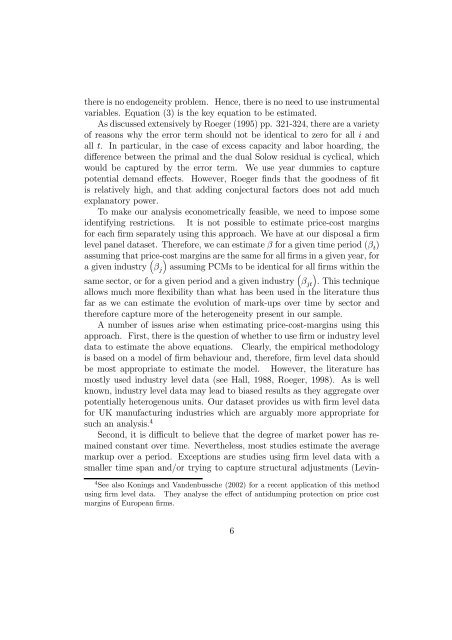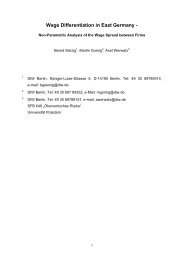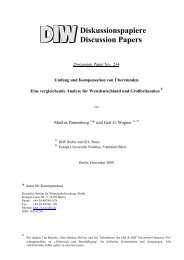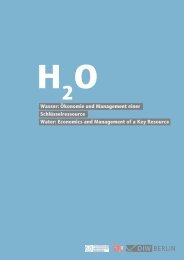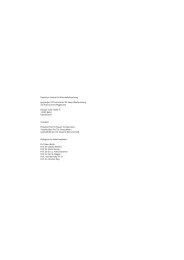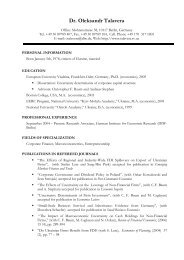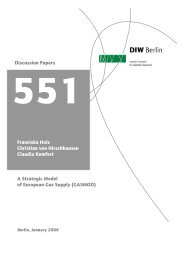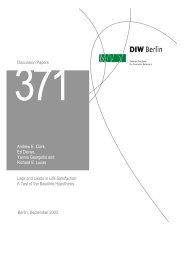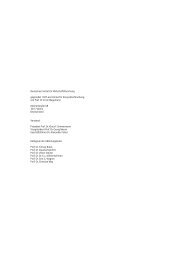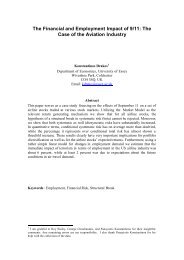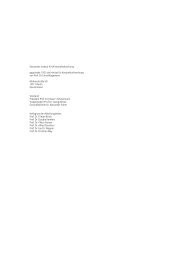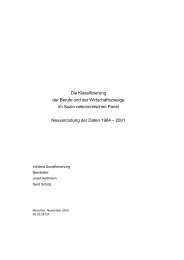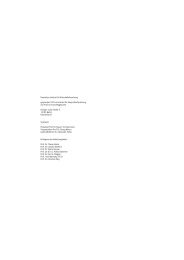Holger Görg and Frederic Warzynski Price cost margins ... - DIW Berlin
Holger Görg and Frederic Warzynski Price cost margins ... - DIW Berlin
Holger Görg and Frederic Warzynski Price cost margins ... - DIW Berlin
You also want an ePaper? Increase the reach of your titles
YUMPU automatically turns print PDFs into web optimized ePapers that Google loves.
there is no endogeneity problem. Hence, there is no need to use instrumental<br />
variables. Equation (3) is the key equation to be estimated.<br />
As discussed extensively by Roeger (1995) pp. 321-324, there are a variety<br />
of reasons why the error term should not be identical to zero for all i <strong>and</strong><br />
all t. In particular, in the case of excess capacity <strong>and</strong> labor hoarding, the<br />
difference between the primal <strong>and</strong> the dual Solow residual is cyclical, which<br />
would be captured by the error term. We use year dummies to capture<br />
potential dem<strong>and</strong> effects. However, Roeger finds that the goodness of fit<br />
is relatively high, <strong>and</strong> that adding conjectural factors does not add much<br />
explanatory power.<br />
To make our analysis econometrically feasible, we need to impose some<br />
identifying restrictions. It is not possible to estimate price-<strong>cost</strong> <strong>margins</strong><br />
for each firm separately using this approach. We have at our disposal a firm<br />
level panel dataset. Therefore, we can estimate β for a given time period (βt) assuming that price-<strong>cost</strong> <strong>margins</strong> are the same for all firmsinagivenyear,for<br />
a given industry ³ ´<br />
βj assuming PCMs to be identical for all firms within the<br />
same sector, or for a given period <strong>and</strong> a given industry ³ ´<br />
βjt . This technique<br />
allows much more flexibility than what has been used in the literature thus<br />
far as we can estimate the evolution of mark-ups over time by sector <strong>and</strong><br />
therefore capture more of the heterogeneity present in our sample.<br />
A number of issues arise when estimating price-<strong>cost</strong>-<strong>margins</strong> using this<br />
approach. First, there is the question of whether to use firm or industry level<br />
data to estimate the above equations. Clearly, the empirical methodology<br />
isbasedonamodeloffirm behaviour <strong>and</strong>, therefore, firm level data should<br />
be most appropriate to estimate the model. However, the literature has<br />
mostly used industry level data (see Hall, 1988, Roeger, 1998). As is well<br />
known, industry level data may lead to biased results as they aggregate over<br />
potentially heterogenous units. Our dataset provides us with firm level data<br />
for UK manufacturing industries which are arguably more appropriate for<br />
such an analysis. 4<br />
Second, it is difficult to believe that the degree of market power has remained<br />
constant over time. Nevertheless, most studies estimate the average<br />
markup over a period. Exceptions are studies using firm level data with a<br />
smaller time span <strong>and</strong>/or trying to capture structural adjustments (Levin-<br />
4 See also Konings <strong>and</strong> V<strong>and</strong>enbussche (2002) for a recent application of this method<br />
using firm level data. They analyse the effect of antidumping protection on price <strong>cost</strong><br />
<strong>margins</strong> of European firms.<br />
6


